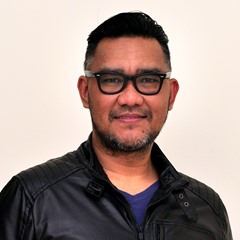Limiting greenhouse gas (GHG) emissions significantly will have a “dramatic and lasting impact” on Qatar’s energy system, according to experts at Roland Berger strategy consultants.
“We expect an accelerated technology shift in power and water production, from gas-based power generation to renewable energies, such as photovoltaics (PV) and wind. In addition, energy efficiency efforts will increase in order to save electricity and water.
“This energy transition in the country will affect the entire system and requires comprehensive approaches and holistic process thinking. Digitisation will help to integrate fluctuating renewable energies into Qatar’s transmission and distribution grids and is essential for improving energy efficiency measures in the country, said Jörg Klasen, principal at Roland Berger.
A study by Roland Berger reported that Qatar’s electricity and water sector has grown continuously over the past decades, driven by a higher number of people living and working in the country, growing industrial and service sectors, and generally higher per capita consumption.
“Today, the average annual electricity consumption per capita is about 16,000kWh, and the daily water consumption is about 625 l. Both figures are among the highest in the world and are significantly higher than in other GCC countries,” the study stated.
The study showed that current targets and initiatives defined in Qatar’s National Development Strategy until 2022 include already the installation of 800MW of new renewable energy capacity, an average 8% reduction in electricity consumption and a 15% reduction in water consumption per capita.
The Tarsheed initiative to raise public awareness of energy efficiency and savings was launched by Kahramaa already in 2012. The new targets for the energy and water sector up to 2030 will continue in this direction and expected to be ambitious, the study also reported.
In the next decade, the Internet of Things (IoT), Advanced Analytics (AA), and the blockchain will drive the digital transformation in energy supply. Examples for relevant use cases in Qatar are intelligent energy consumption, remote monitoring and grid management or power prediction for renewable energies, according to Klasen.
To implement an effective energy efficiency programme, managers need a high level of transparency of total and specific consumption over time according to different consumption patterns, he said.
“IoT technologies also help in remote monitoring and grid management. Newly-built PV and wind capacities will increase the fluctuating loads in the grids and additional measures will be necessary to stabilise the frequency in the system. To a certain extent, this will be handled by existing conventional power plants, limited possibilities for demand side management, such as in district cooling, or additionally installed battery storage systems.
“However, all these countermeasures will have to be orchestrated, and responsible managers will need transparency about grid loads and frequency in order to decide on short-term operational and long-term strategic measures,” Klasen said.
Data from IoT devices connected in a network can be used to extend real-time monitoring and active grid management in Qatar’s transmission and distribution systems, he also said.
A strategic, implementation-oriented approach is needed to effectively accelerate the essential further digital transformation in Qatar’s energy sector, said Dr Fabian Engels, senior partner at Roland Berger.
“This approach considers future supply and demand growth scenarios, builds on a deep understanding of energy systems and applied technologies, and incorporates extensive experience with successfully implemented digital solutions globally,” Engels added.
“We expect an accelerated technology shift in power and water production, from gas-based power generation to renewable energies, such as photovoltaics (PV) and wind. In addition, energy efficiency efforts will increase in order to save electricity and water.
“This energy transition in the country will affect the entire system and requires comprehensive approaches and holistic process thinking. Digitisation will help to integrate fluctuating renewable energies into Qatar’s transmission and distribution grids and is essential for improving energy efficiency measures in the country, said Jörg Klasen, principal at Roland Berger.
A study by Roland Berger reported that Qatar’s electricity and water sector has grown continuously over the past decades, driven by a higher number of people living and working in the country, growing industrial and service sectors, and generally higher per capita consumption.
“Today, the average annual electricity consumption per capita is about 16,000kWh, and the daily water consumption is about 625 l. Both figures are among the highest in the world and are significantly higher than in other GCC countries,” the study stated.
The study showed that current targets and initiatives defined in Qatar’s National Development Strategy until 2022 include already the installation of 800MW of new renewable energy capacity, an average 8% reduction in electricity consumption and a 15% reduction in water consumption per capita.
The Tarsheed initiative to raise public awareness of energy efficiency and savings was launched by Kahramaa already in 2012. The new targets for the energy and water sector up to 2030 will continue in this direction and expected to be ambitious, the study also reported.
In the next decade, the Internet of Things (IoT), Advanced Analytics (AA), and the blockchain will drive the digital transformation in energy supply. Examples for relevant use cases in Qatar are intelligent energy consumption, remote monitoring and grid management or power prediction for renewable energies, according to Klasen.
To implement an effective energy efficiency programme, managers need a high level of transparency of total and specific consumption over time according to different consumption patterns, he said.
“IoT technologies also help in remote monitoring and grid management. Newly-built PV and wind capacities will increase the fluctuating loads in the grids and additional measures will be necessary to stabilise the frequency in the system. To a certain extent, this will be handled by existing conventional power plants, limited possibilities for demand side management, such as in district cooling, or additionally installed battery storage systems.
“However, all these countermeasures will have to be orchestrated, and responsible managers will need transparency about grid loads and frequency in order to decide on short-term operational and long-term strategic measures,” Klasen said.
Data from IoT devices connected in a network can be used to extend real-time monitoring and active grid management in Qatar’s transmission and distribution systems, he also said.
A strategic, implementation-oriented approach is needed to effectively accelerate the essential further digital transformation in Qatar’s energy sector, said Dr Fabian Engels, senior partner at Roland Berger.
“This approach considers future supply and demand growth scenarios, builds on a deep understanding of energy systems and applied technologies, and incorporates extensive experience with successfully implemented digital solutions globally,” Engels added.


